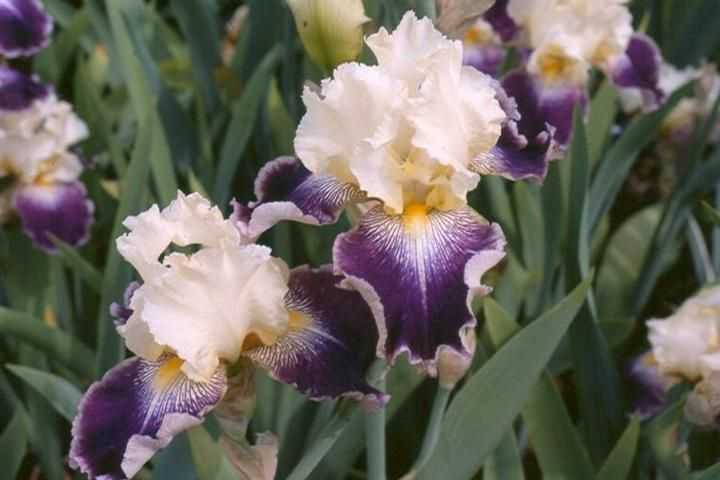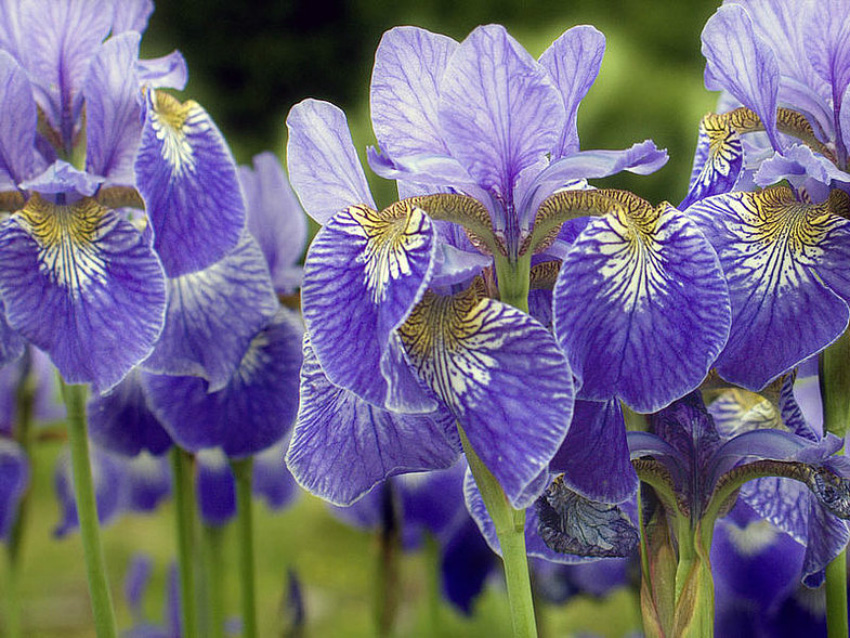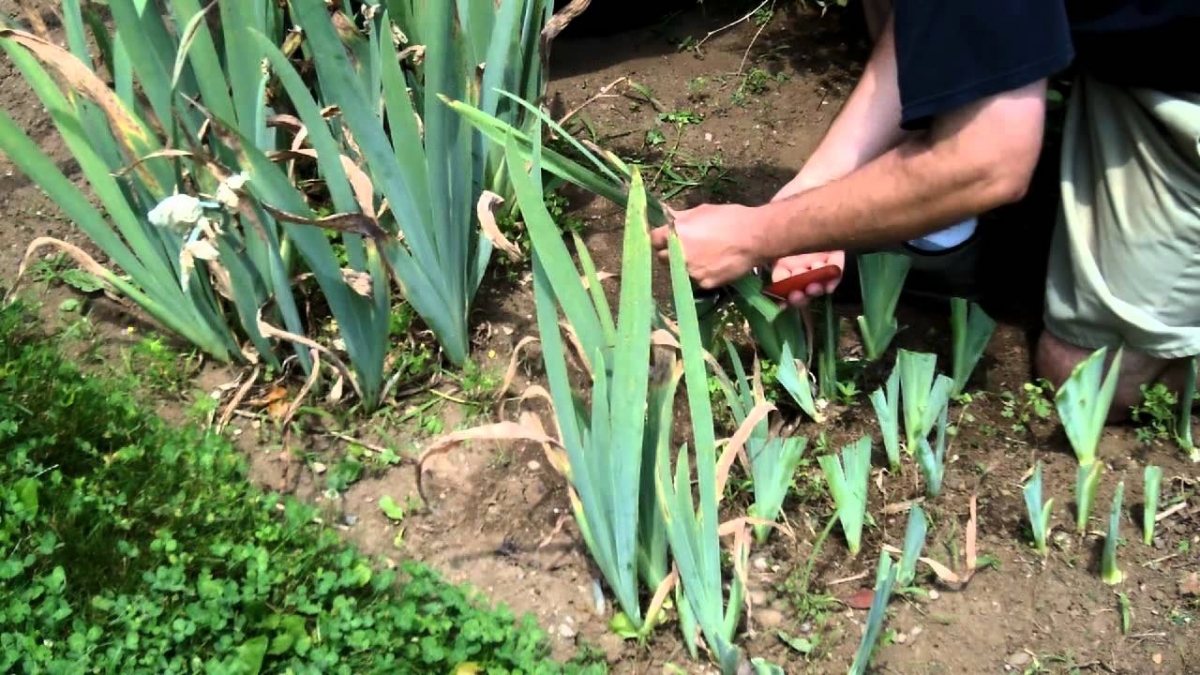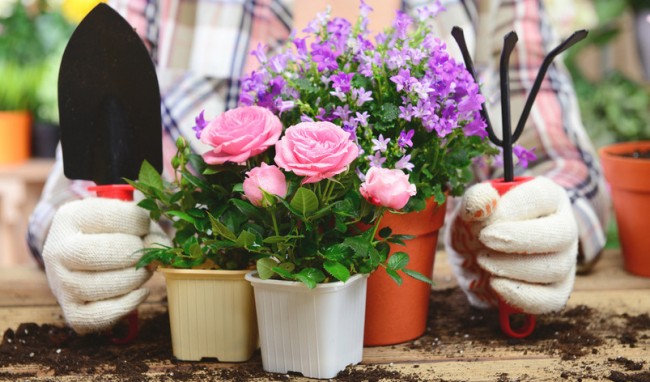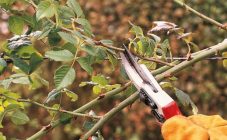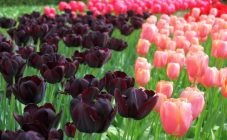Content:
Irises are a favorite plant of most gardeners. They are also called iris. This species is represented by both annual and perennial flowers. With their graceful bloom, they add a zest to the garden and complete the overall composition. You need to keep in mind the nuances of care, as well as when to trim the irises after flowering.
When and for how long iris blooms
These plants bloom with the onset of May, flowering lasts from a month to 2, depending on the variety. It can end in early August. Throughout the warm period, the flowers retain their decorative effect, thanks to their bright green leaves.
Unlike a bush, a single flower does not bloom for so long. It retains its decorative effect and fragrance for only 2-3 days in hot weather, on cool days this time can increase to 5 days. Also, this duration depends on the variety and grade.
Flowering duration
According to the duration of flowering of a flower, irises are divided into groups:
- Very early,
- Early,
- Medium early,
- Average,
- Medium late,
- Late.
The period between the ejection of flower arrows: in the early groups - 4-7 days, in the middle ones - 5-9 days, in the later ones - 8-10, sometimes more. Irises bloom throughout the summer.
The earliest species is the Pumila iris. Its varieties bloom in the first days of May. All of them are dwarf plants.
In June, medium groups bloom, these include the following species:
- Pallida,
- Beardless
- Swamp,
- Oriental,
- Cerebral.
In June, the Siberian iris begins to bloom. Closer to August, Japanese iris pleases with its beautiful flowers.
Agrotechnics
Mostly irises bloom in spring, but there are varieties that begin their flowering closer to summer, some specimens bloom again in the fall. The most massive flowering occurs in the 3rd year after planting in a permanent place.
Irises are unpretentious to care for and are not afraid of frost. Because of this, they are quite often planted in the city. The most optimal time for planting is autumn, therefore, after flowering, they are dug out, divided, then planted in new places.
Planting flowers
Rhizome irises are very fond of sunlight, so they develop well and bloom profusely precisely with the required amount of light. Despite this, they grow well in shaded areas, but they do not bloom so abundantly.
When choosing a place for planting bushes, you should determine a part of the site where the soil is not heavy and moisture passes well. Stagnant water will cause the rhizome to rot.
Although the flowers are unpretentious, you shouldn't plant them in heavy soil. It is better to add sand and peat there, then dig it up. If the soil is depleted, it is necessary to add a fertilizer with a low nitrogen content to it. The sour soil of the irises is also not in spirit, although there is an overgrowth of green mass, but they may bloom sluggishly or not bloom at all. Such soil can be neutralized with ash.
The soil must be dug onto the bayonet of the shovel. If necessary, top dressing should be applied a week before planting. The hole should not be deep so that the bud remains at ground level; when planting, the leaves should be vertical. For further growth, it is necessary to leave about 40 cm between the bushes. After planting it needs to be watered, next time it needs to be watered after 3 days have passed. If it is necessary to preserve the planting material, it should be left in a cool, dry place that is well ventilated.
Bulbous irises are thermophilic; they like heated, loose soil. Varieties of this species love dry places, therefore they require the least moisture. Their landing can be carried out in central Russia, starting from mid-September, in the southern regions - from mid-October. For wintering, seedlings should be covered with a covering material.
Care after landing
For rhizome species, care is minimal. After planting, the first time you need to pull out the weeds by hand, you need to loosen the soil carefully, since the roots lie at the very surface of the earth. When the flowers grow, loosening and weeding are no longer required.
On this, you need to continue to care for the plants and cover them so as not to damage the root system, which is located at the very top of the soil.
Post-flowering care
Caring for irises after flowering begins with pruning the peduncles. This will keep the planting decorative. There is no need to prune the leaves at the same time, this can be done a little later (with the appearance of the first significant frosts), when the plant is preparing for winter.
Bulbous species will require more attention. In the fall, you need to remove yellow or brown-spotted leaves. At the end of the autumn season, the more thermophilic varieties need to be covered, pre-wilted flowers must be removed, the peduncle must be trimmed as much as possible.
Should irises be trimmed
To trim or not, each gardener needs to decide independently. Irises develop very well and reproduce by rhizome, so there is no particular need to propagate them by seeds. If you do not remove wilted flowers, this will lead to self-seeding, to the fact that the flower will become not just a decoration of the garden, but will clog it.
Tips from experienced florists
At the time when it is planned to trim faded irises, tools should be prepared. In order not to damage the still strong plant, it is worth using small garden shears with a powerful and sharp blade. The first time it is necessary to cut off the wilted bud and a small part of the peduncle - up to 5 cm. The rest is best removed when it hangs up at a height of 2 cm from the soil.
As for the leaves, they should only be cut in the fall before being sent to winter. In the summer, even if the plants have faded long ago, they cannot be cut off, because they accumulate useful substances. Removal of foliage should be done a couple of weeks before the onset of cold weather.
Since there are quite a few varieties, everyone can choose those that will decorate the site. If you take proper care of the plants, they will delight gardeners with their appearance for many years, decorating the plots.
These are the nuances that flower growers should know about when to cut irises and peonies after flowering. Considering them, it will be easy to create comfort on your own site.
